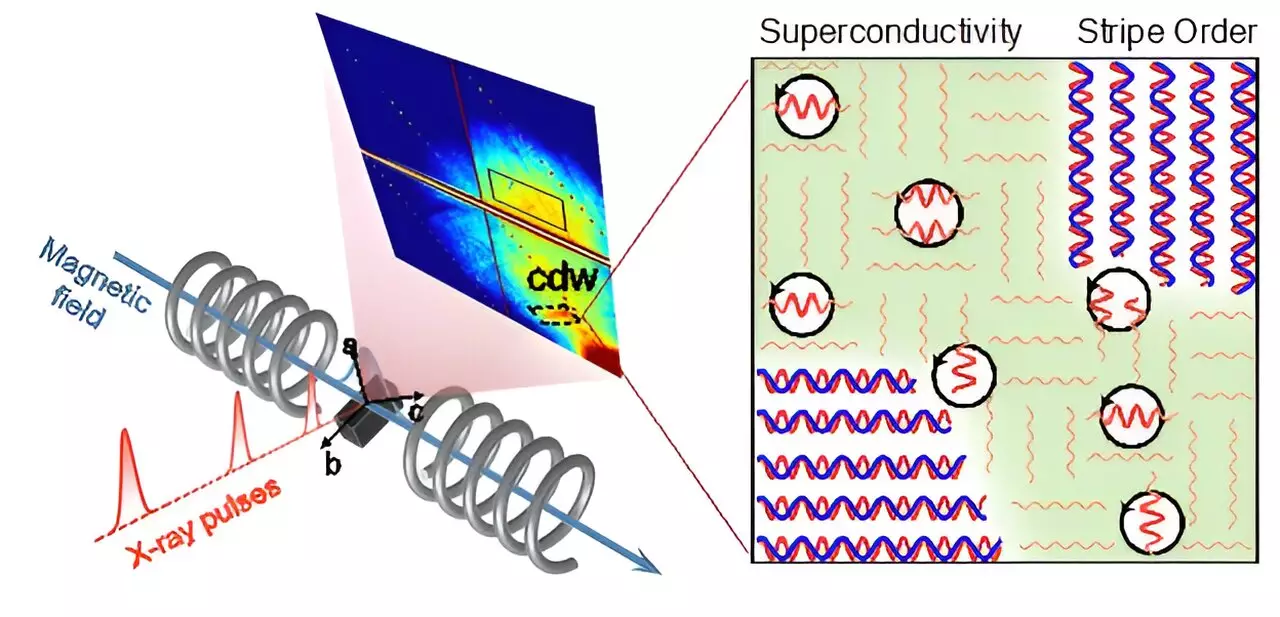The realm of superconductivity has always intrigued physicists, particularly the behavior of high-temperature superconductors known as cuprates. In these materials, the interplay between superconductivity and other electron phenomena such as magnetic spin and charge density wave (CDW) order takes center stage. Traditionally, superconductivity has been perceived as a competing phenomenon against these properties, leading to a mechanistic understanding that has guided research for decades. However, recent groundbreaking findings reveal a nuanced relationship that could reshape our understanding of these materials.
Unraveling the Mystery of Stripe States
Research indicates that in certain cuprates, the interactions among electrons can induce them to organize themselves into stripes, creating a unique “stripe state.” This organization arises from the coupling of spin density waves (SDW) and CDWs, which align to create a stable environment that seemingly works against superconductor properties. Historically, this understanding has led scientists to prioritize the competition between these states as detrimental to superconductivity. However, fresh insights have emerged, indicating that short-range CDWs may actually complement rather than detract from superconductivity, leading to a reconsideration of how these states interact.
A Counterintuitive Harmony: Short-Range CDW and Superconductivity
The paradigm shift lies in the realization that short-range CDWs are not merely adversaries to superconductivity but potential partners. Traditional models predicted that these short-range charge orders would suppress superconductivity. Instead, researchers found that they can coexist and even enhance the superconducting phase in cuprates. This counterintuitive finding resonates with a broader theme in physics: that nature often provides elegant solutions that defy our conventional wisdom. The understanding that controlling or promoting short-range charge order could stabilize superconductivity at elevated temperatures and magnetic fields opens up exciting avenues for future research and applications.
Magnetic Fields and the Dynamic Behavior of Vortex States
Another intriguing aspect of this research involves the surprising dynamics of vortex states in high magnetic fields. The ability of cuprate materials to switch from a static vortex state to a fluid vortex liquid state under specific conditions indicates a rich tapestry of behaviors dependent on external factors such as temperature and magnetic intensity. Observations in fields ranging from 12 to 24 Tesla revealed a remarkable correlation between energy states and vortex mobility, challenging established theories of superconducting transitions. The observed enhancement of CDW intensity at the moment of vortex melting—below the critical magnetic field quenching superconductivity—places an exclamation point on the interconnected nature of electronic phenomena within cuprates.
Pioneering a Unified Quantum Framework
As researchers delve deeper into these findings, the push toward a coherent quantum description of superconductivity and density waves in cuprates seems more tangible than ever. This unified approach could not only elucidate the complicated behavior of these materials but could also catalyze breakthroughs in the sustainable advancement of superconductivity technologies. The implications for high-performance computing and efficient energy transmission are tremendous, highlighting the importance of fostering interdisciplinary collaboration to unlock the potential of cuprates and beyond.
This work illuminates a transformative path forward in materials science, offering insights that could redefine the very nature of superconductivity and its multifaceted interactions. As these mysteries unfold, the excitement in the scientific community is palpable, reminding us that the universe often holds answers that challenge and inspire our understanding of reality.


Leave a Reply